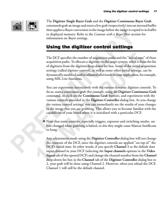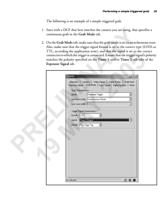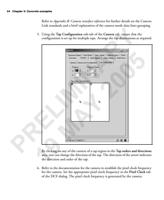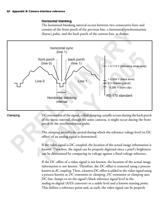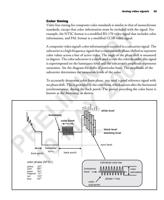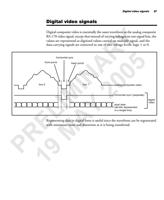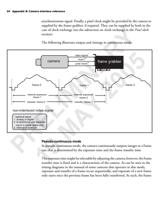
Analog video signals 83
digitized. Each pixel's brightness can be determined by comparing its voltage
against a fixed voltage reference. The effects of AC coupling and DC restoration
are illustrated below:
RY Before AC coupling
DC
Level
IMINA2005 AfterAC coupling and DC restoration
DC
Level
L Y Pixel clock
To produce the digital image, you must specify a sampling rate, called the pixel
clock, which determines how many pixels will be extracted from the active portion
E A of the analog signal. In other words, the pixel clock is used to divide the incoming
horizontal line of video into separate pixels by specifying the exact location, in
time, of each pixel.
R M The pixel clock is derived from either the camera or your frame grabber. Refer to
your camera’s operating manual to determine if the camera provides a pixel clock.
P 9Your frame grabber can generate a pixel clock from its phase-locked loop (PLL).
1Here, the PLL locks itself to a reference signal, either the frame grabber’s on-board
crystal oscillator, or an external line synchronization (the hsync) when periodic.
This ensures that the number of pixels in each line remains constant.
❖ In general, an external pixel clock can support very high digitization rates and
allows for exact pixel location.

















